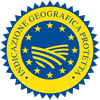Description
The Cipolla Bianca di Margherita PGI refers to fresh bulbs belonging to the species Allium Cepa L., limited to the local ecotypes Marzaiola or Aprilatica (early-ripening), Maggiaiola (mid-season), Giugniese and Lugliatica (late-ripening).
Production Area
The production area of Cipolla Bianca di Margherita PGI is within the area along the Adriatic coast that falls in the Municipality of Margherita di Savoia, in the Province of Barletta-Andria-Trani, and the municipalities of Zapponeta and Manfredonia, in the Province of Foggia, in the Apulia region.
Production Method
The cultivation of Cipolla Bianca di Margherita PGI is based on local self-reproducing ecotypes, selected by several generations of farmers in the area. The seeds are sown in previously prepared seed trays between late August and early September. The seedlings are transplanted between November and February; watering is extremely important at this stage and must be commensurate with seasonal rains. The harvest, carried out by hand, begins at different times, depending on the variety of onion: mid-March for Marzaiola or Aprilatica, which ripens first; May for Maggiaiola; between June and mid-July for Giugniese and Lugliatica. The bulbs for the new crops are selected during the harvest. Packaging is only permitted if it is done immediately after the harvest, while repackaging the product outside the production area is prohibited.
Appearance and Flavour
Cipolla Bianca di Margherita PGI is characterised by white bulbs with a sweet and succulent flavour; they are tender and crunchy and have a high sugar content. The Marzaiola or Aprilatica variety has a flattened top and bottom; the Maggiaiola is less flattened; the Giugniese and Lugliatica varieties are round.
History
A special cultivation technique has been used in the Cipolla Bianca di Margherita PGI production area since the beginning of the 19th century, characterised by the ability to obtain seed from sandy soil, grow seedlings, transplant them with the use of straw to protect them from wind erosion, and then harvest them by hand. These same growing techniques are still used today. Evidence of the commercialisation of the white onion from Margherita dates back to the early nineteenth century, although it was only halfway through last century that the product established itself on Italian fruit and vegetable markets, especially during the period between April and July.
Gastronomy
To preserve the tenderness and crunchiness of the bulb, it is best to keep Cipolla Bianca di Margherita PGI in a cool, dry place. Thanks to its characteristic sweetness, it is particularly good as a side dish to meat or fish, because it enhances their flavour without overpowering it. It can be stewed, grilled, pan-fried or baked, but is also widely used raw in salads, with boiled potatoes, carrots or cucumbers, dressed with extra virgin olive oil. It is Ideal for making soups and minestrones. The most innovative recipes include Cipolla Bianca di Margherita PGI being used to make tasty jams and marmalades, served with toasted bread, cheeses, shellfish and boiled meat.
Marketing
The product is marketed as Cipolla Bianca di Margherita PGI. It is sold fresh, packed in net bags, crates or trays containing a varying number of onions, or in braids with at least 3 bulbs.
Distinctive Features
Cipolla Bianca di Margherita PGI is characterised by its crystal white colour, its unusual tenderness and crunchiness, and high sugar content, which are given to the particular cultivation technique, in which the sandy soil, with a water table very close to the surface, promotes stunted growth and low dry matter content.


















